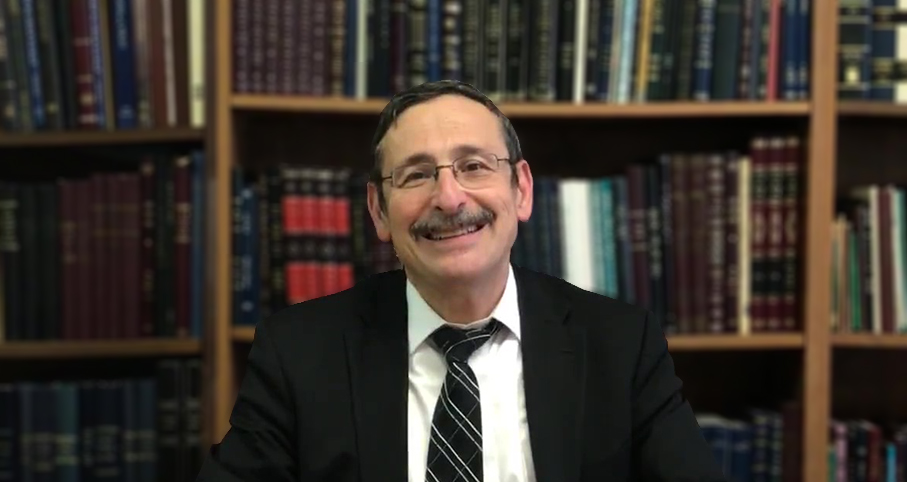- Sections
- Bemare Habazak - Rabbis Questions
38
Answer: Yasher koach for taking care of the mezuza. The responsibilities of multiple people can often be neglected (see Bava Batra 24b). Since you bought the mezuza yourself, unless you had in mind to formally acquire it on behalf the group, you do not need permission from anyone from a monetary perspective.

Bemare Habazak - Rabbis Questions (596)
Rabbi Daniel Mann
541 - Naming for One, Thinking of Another
542 - Switching the Location of a Mezuza
543 - Switching the Location of a Mezuza
Load More
Moving a mezuza from a location where it is definitely part of a mitzva to one in which the obligation/mitzva is doubtful could potentially violate the rule of ma’alin bakodesh v’lo moridin (=mbkvlm; one is forbidden to lower the status of a sacred object). This concept is derived from p’sukim (Menachot 99a) in the context of increasing and not decreasing the honor of holy objects in the mikdash, and there are varied opinions on whether this is an authentic Torah law or a Rabbinic asmachta (see Be’ur Halacha to Orach Chayim 42:1). Additional Talmudic applications of mbkvlm vary greatly (including: a temporary kohen gadol not returning to serve as a simple kohen (Yoma 73a); increasing the number of candles as Chanuka progresses (Shabbat 21b); not using something from tefillin shel rosh for a shel yad (Menachot 34b)). It is likely that some applications represent the heart of the halacha and others are only related concepts (unpublished shiur by Rav Asher Weiss).
The following, cited by the Mishna Berura (15:1), is the closest case to ours that is discussed by classical Acharonim. The Shulchan Aruch (OC 15:1) permits moving tzitzit from one garment to another. The Pri Megadim (EA 15:2) is unsure whether it is permitted to move them from a garment with a Torah-level obligation to one with only a Rabbinic one. The Artzot Hachayim (15:5) permits it, whereas he forbids taking them from the garment of an adult to that of a child. (Their short pieces mention the possibility of bizuy (disgrace) to the tzitzit, not the concept of mbkvlm).
It is unclear whether we can extrapolate from these sources to our mezuza question. There is a machloket whether mbkvlm applies only to matters related to kedusha or even non-kedusha-related mitzva objects (see Beit Yosef, YD 259). Mezuza is in the kedusha category, whereas tzitzit are not (Megilla 26b). We also have to consider to what extent the change in the mezuza’s location impacts on its sanctity, as one can argue that wherever a mezuza is, it itself has the same kedusha irrespective of the mezuza-obligation status of the doorway (see discussion in Kvi’at Mezuza K’hilchata 14:5).
In any case, (among?) the first to write about taking a mezuza from a doorway that fully requires a mezuza to one in which it is only a safek are contemporary poskim. The very influential Rav S.Z. Auerbach (Minchat Shlomo II, 97.24) reasons that it is forbidden because of mbkvlm, as does Teshuvot V’hanagot (I:649). In the absence of anyone of such prominence disagreeing with them, it is difficult to allow the move. On the other hand, it is reasonable to argue that one should be able to rely on the majority opinion that a storage room’s mezuza obligation is definite.

Double Wrapping Food in a Treif Oven
Rabbi Daniel Mann | Kislev 4 5777

Siyum for Taanit Bechorot Via Live Streaming
Rabbi Daniel Mann | Adar 29 5780

Ask the Rabbi: Not Taking Vacation Time on Chol Hamo’ed
Rabbi Daniel Mann | Nisan 5785

Planting a Fruit Tree he may Uproot
Rabbi Daniel Mann | Iyar 5783

What is the Significance of the "Sheva Minim" - the 7 Species?
Rabbi Stewart Weiss | Av 19 5780

What Is the Significance of the Number 40 in Jewish Tradition?
Rabbi Stewart Weiss | Tevet 4 5782








